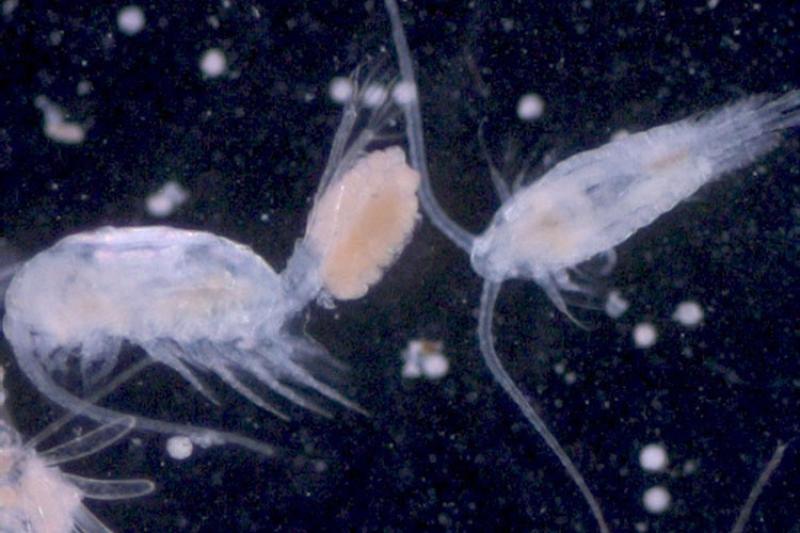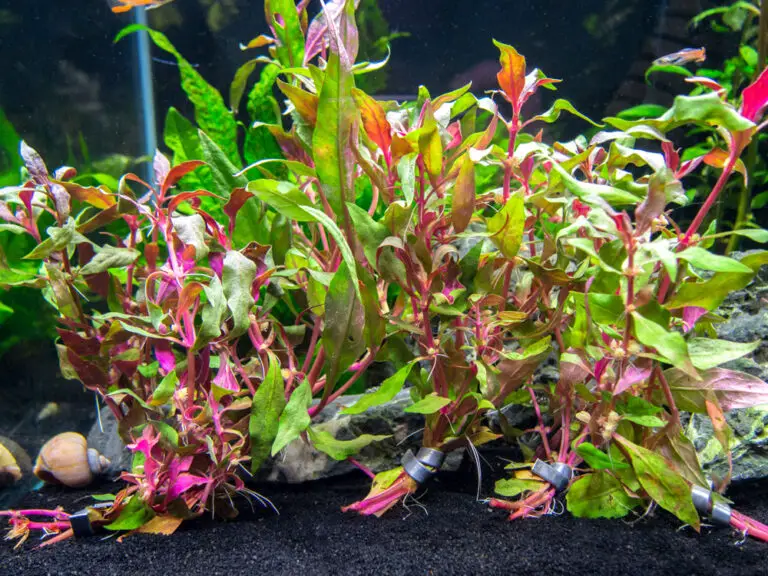What Do Copepods Eat?
Copepods are small aquatic crustaceans that feed on a variety of different food sources. Commonly, copepods eat algae and other tiny zooplankton such as rotifers or cladocerans. They will also consume bacteria, detritus (decaying organic matter), and even the eggs or larvae of other animals.
Copepods can be found in both freshwater and marine environments, where they may feed on the surface film or hunt for prey in deeper areas of water. In some cases, larger species may even feed on fish larvae or smaller invertebrates like mollusks. While copepods primarily scavenge for food in most environments, they have been known to actively hunt down their prey when conditions are right.
Copepods are tiny crustaceans that feed mainly on phytoplankton, but can also consume zooplankton, detritus, bacteria, and other organic material. They are important members of the oceanic food web as they serve as an energy source for larger organisms such as fish and whales. Copepods filter-feed by using their specialized appendages to capture prey from the water column.
As a result, copepod populations have been found to be responsible for up to 80% of total primary production in some parts of the world’s oceans.
What do Copepods eat?
Do Copepods Eat Algae
Copepods are small crustaceans that feed mainly on algae as a primary food source. Through their grazing behavior, they help to keep the balance of phytoplankton and other organisms in the water column, ensuring healthy marine ecosystems. Copepods have specialized mouthparts that enable them to filter out microscopic particles from the water and capture single-celled algae which is then digested for nourishment.
Do Copepods Eat Phytoplankton
Copepods are tiny crustaceans that play a major role in the marine food web, and they feed on phytoplankton. Phytoplankton are microscopic plant-like organisms that float in the water column, providing an essential source of energy for copepods. Copepods graze on these single-celled algae, filtering them out of the water with their specialized appendages and consuming them as a primary part of their diet.
As such, copepods can be considered keystone species since they help to control phytoplankton populations by eating large amounts of it each day.
Do Copepods Eat Cyanobacteria
Copepods are a type of zooplankton that feed on many different types of food, including cyanobacteria. Cyanobacteria are small photosynthetic organisms that produce their own energy from light and they can be found in virtually all aquatic habitats. Copepods consume the bacteria either directly or indirectly by consuming other organisms that have fed on them.
Additionally, copepods may also consume dissolved organic matter derived from cyanobacterial cells, which further contributes to their nutrition needs.
What Do Copepods Look Like
Copepods are small, shrimp-like crustaceans that can range from 0.2 to over 3 mm in size. They have a segmented body with two distinct regions: the cephalothorax and the abdomen. Copepods also feature two antennae on their head and three pairs of legs for swimming and clinging onto surfaces.
They come in many different colors including black, brown, yellow, white and red depending on species.
Are Copepods Herbivores
Copepods are a type of small crustacean found in nearly all water habitats around the world. These miniscule creatures, which range in size from 0.2 to 34 mm, feed primarily on algae and other plant matter and therefore have an herbivorous diet. Copepods play an important role in many aquatic ecosystems as they are a major food source for larger species such as fish and whales.
Do Copepods Eat Bacteria
Copepods are small crustaceans that play a vital role in aquatic ecosystems, and they do feed on bacteria. Copepods have an interesting feeding behavior known as ‘selective grazing’ where they selectively graze on certain types of bacteria depending on the environment. This helps to ensure a healthy balance of various types of bacterial populations in the water column, which aids overall ecosystem health.
Do Krill Eat Copepods
Krill are a type of crustacean found in the ocean and they feed on a variety of organisms. Copepods are among the items that Krill consume as part of their diet, usually by filtering out small particles from seawater or scraping food off surfaces like rocks and coral reefs. Copepods provide essential nutrients for Krill, such as proteins, lipids and carbohydrates, making them an important source of sustenance for these creatures.
What Eats Copepods Freshwater
Copepods are a type of small crustacean that inhabit both freshwater and saltwater habitats. In the freshwater ecosystem, copepods serve as an important food source for fish, amphibians, reptiles, and even birds. Fish such as bass, trout, pike, salmon, catfish and others all rely on copepods to meet their dietary needs.
Additionally some species of turtles also feed on them as part of their regular diet. Even some bird species known for foraging in rivers or lakes may eat copepods from time to time when they can find them.

Credit: www.algaebarn.com
What Do Aquarium Copepods Eat?
Aquarium copepods are small crustaceans that are often used as a natural food source for aquarium fish. They feed on algae, diatoms, and other microscopic organisms in the water column which makes them an excellent choice for natural filtration of aquariums. Copepods can also be fed directly to fish or live foods such as baby brine shrimp or adult brine shrimp can be added to the tank.
Copepods consume phytoplankton, detritus, bacteria and other microorganisms. In addition to their role as a food source for aquarium fish, copepods also help keep tanks clean by consuming organic material that would otherwise accumulate in the substrate or filter media leading to poor water quality.
Do Copepods Need to Be Fed?
Copepods are small crustaceans that play a vital role in the aquatic ecosystem. They are an important food source for many fish and other aquatic animals, but do copepods need to be fed? The answer is yes!
Copepods require a balanced diet of phytoplankton, bacteria, detritus, and even some dissolved organic matter. Without these dietary components they will not survive or thrive. For example, if there are insufficient amounts of phytoplankton present in the water column then copepod populations may crash due to lack of food availability.
It’s therefore essential that those caring for copepods provide them with sufficient nutrition so as to maintain healthy populations throughout their habitat. In addition to providing adequate nutrients through natural means (such as adding aquarium-safe products that increase available microorganisms), it may also be necessary to supplement your tank with additional live food sources such as brine shrimp nauplii or enriched rotifers depending on what species you have chosen and its nutritional requirements. To ensure optimal health and survival rates among your population of copepods you should always strive for a balanced diet!
Do Copepods Eat Fish Waste?
Copepods are a type of crustacean, and they primarily feed on phytoplankton and zooplankton. They can also be found in bodies of water where there is an abundance of organic matter like fish waste. Copepods are often seen eating the remains left by fish, such as dead skin cells or undigested food particles that have been cast off into the water.
As decomposers, copepods help to break down this material which helps to keep their environment clean and healthy. In addition to consuming these materials, copepods play an important role in the aquatic food chain by serving as prey for larger organisms such as fishes or birds. So while it may not seem appetizing at first thought, do not be quick to judge when seeing copepods feasting on fish waste – they are actually doing us all a favor!
What Do Copepods Eat in Reef Tank?
Copepods are small crustaceans that inhabit ocean reefs and are an important part of the food chain. They feed on phytoplankton, which is a form of microalgae found in reef tanks. Phytoplankton provides copepods with essential nutrients such as amino acids, lipids, proteins, vitamins, minerals and carbohydrates.
Copepods also consume detritus or bits of leftover organic material from other organisms like bacteria or algae. This detritus includes uneaten fish food as well as decaying plant matter and can also provide them with some additional nutrition.
Conclusion
In conclusion, copepods are an incredibly important part of almost every aquatic ecosystem. They feed on a wide variety of food sources, including phytoplankton, zooplankton, bacteria, algae and detritus. They play a vital role in the balance between predator and prey species by providing a source of sustenance for larger animals while also helping to keep populations of other organisms in check.
Without copepods’ presence and activity in our oceans and lakes we would see drastic changes in the overall health of these environments.





